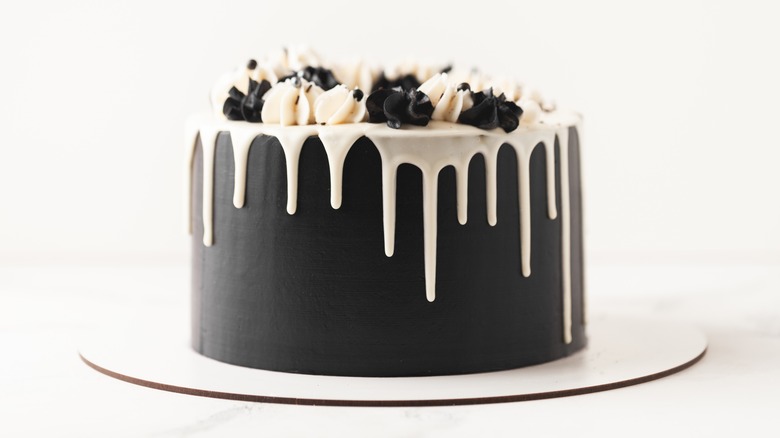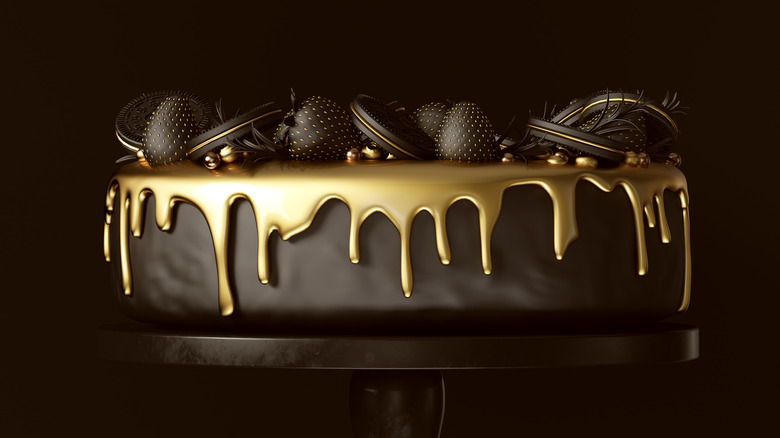The Secret To Dyeing Black Icing Without Excess Artificial Coloring
For every baker dreaming of crisp white wedding cakes and pillowy piles of princess pink frosting on bedazzled cupcakes, there's a little goth kitchen witch looking to lend an edible edge to her baked goods. Layer cakes shaped like giant spiders, "bloody" marble cakes, and sleek black cakes that look fit for a funeral are all excellent opportunities to get your spook on, but they all require the elusive and captivating black icing.
Liquid or gel food colorings are often used to achieve a black icing look, but if too little is used, the icing will turn gray, and if too much food coloring is used, it could ruin the texture of a frosting or buttercream (per Chelsweets). Liquid food coloring can also cause fondant to break or develop pockmarks, according to Sugar Geek Show, and many steer clear of the stuff for fear of taking one bite and staining their teeth and lips black – and ruining their party photos.
But when your baked goods aren't all sugar, spice, and everything nice, there's a handy trick those in the know have been using to create black icing at home. And it's probably something you already have in your pantry.
Ultra Dutch processed
Artificial food dyes have been linked to ADHD and hyperactivity, asthma and hives, and even tumor growths, according to Cleveland Clinic. Luckily, there are all kinds of vivid colors you can derive from natural ingredients, like purple from blueberries, yellow from turmeric, and red from beets (per Food 52).
So how about a natural black dye? One brilliant trick involves using cocoa powder — but not the kind you're probably used to. Southern Living recommends using cocoa powder with the words "black" or "ultra Dutch processed" on the label. Cocoa powder comes from dried and roasted cacao beans, but "dutched" cocoa powder is alkalized to make it more smooth, earthy, and bitter, per Serious Eats. Meanwhile, a side effect of this Dutch process is a darker color than that of natural cocoa powder.
Now, keep in mind that this addition will give your icing an automatic chocolate flavor, so it might not work for all flavoring combinations. But if you're working with something that already leans towards chocolate, like a black forest cake or a red velvet cake, the black chocolate icing will offer a welcome twist on the original. According to Wilton, giving the icing an extra day to set will also allow the color to deepen and darken, so it's best to make this recipe a day in advance.

